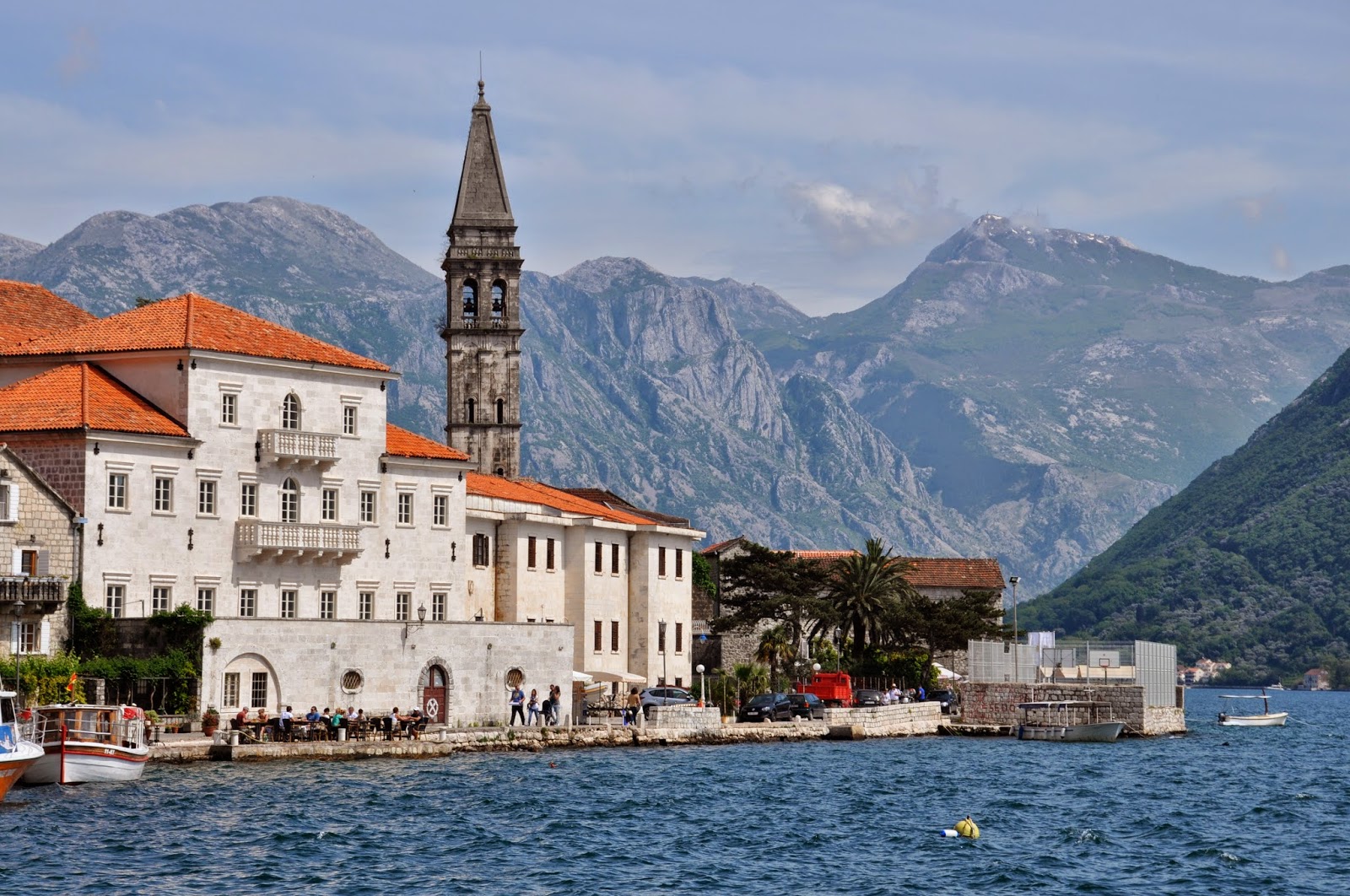Cinquante jours sur les routes de l'ex-Yougoslavie ...
MONTENEGRO
Capitale : PODGORICA
Superficie : 13 812 km2
Population : 662 000
Langue officielle : montenegrin
Monnaie : Euro
Indépendance déclarée le 3 juin 2006, reconnue le 8 juin 2006
BOKA KOTORSKA - THE GULF OF KOTOR is a winding, fjord like inlet of the Adriatic coast. A fine natural harbour, it comprises four bays linked by narrow straits. The stark mountain around the bay slope steeply to a narrow shoreline on which citrus fruits and subtropical plants grow.
A road follows the outline of the inlet, connecting several small settlements and resorts.
KOTOR Maritime museum
 |
| Church in Radovici |
The old town of KOTOR
 |
Kotor lies in one of the most beautiful bays on the Mediterranean, a town of rich cultural tradition and one of the best preserved medieval settlements in this part of the Mediterranean.
Church of St Nicholas
The Franciscan Church of St. Clara
Reconstructed several times between the 14th and the 17th centuries, it has a monumental Baroque altar of multicoloured marble and sculptures. The altar (1708) is the work of Venetian sculptor Francesco Cabianca.
 |
 |
| The clock tower in KOTOR (1602) |

KOTOR marina
The town of Kotor lies at the foot of the sheer Lovcen massif, rising to 1749m. Kotor was founded by the ancient Romans as Acruvium. In the 10th century, it was an autonomous city ruled from Byzantium, and from 1186 to 1371 it was a free city of medieval Serbia. It was Venetian and Hungarian for brief periods, an independent republic from 1395 to 1420, and then again Venetian until 1797. The town suffered periodic damage from Turkish assaults and from earthquakes. French occupation in 1807-14 was followed by Austrian domination until 1918.
The town became part of Yugoslavia in 1918.
The Roofs of the Old Kotor
Azat Galimov
with the kind authorization of the artist
www.azatgalimov.com
Azat Galimov
St.Tryphon's Cathedral
The Cathedral of St.Tryphon in KOTOR was built in the mid 12th century.
 |
 |
 |
 |
 |
 |
Church of Our Lady of Remedy (1518), on the way up to the KOTOR fortress.
Kotor, The main Entrance to the Citadel
Azat Galimov
Azat Galimov at work at the entrance to the Citadel
 |
The formidable walls of the KOTOR fortress were gradually built up between the 9th and 19th centuries, to form a continuous belt around the old urban centre and the sheer cliff of the Hill of St.John which stands over the town. The ring formed by the walls was completed in the 13th and 14th centuries.
The total length of the walls is around 4.5 km, the breadth between 2 and 16 m, and the height varying, but reaching 20 m in places.
The total length of the main ascent is 1200m and there are about 1350 stairs.

 |
| Our Lady of Remedy (1518) |
Les remparts de la robuste forteresse de KOTOR, une des merveilles de l'architecture de fortification du Moyen-Âge, furent construits progressivement entre le Xème et le XIXème siècle, et ils forment une enceinte ininterrompue de murailles autour de l'ancien noyau urbain et du rocher à pic du Mont St. Jean qui s'élève au-dessus de la ville. Le lien entre les remparts fut achevé au XIII ème et XIV ème siècle.
La longueur des murailles est d'environ 4,5 km, leur largeur varie de 2 à 16m et la hauteur à certains endroits atteint 20m.
Le chemin jusqu'au sommet est d'une longueur de 1200m, et comprend environ 1350 marches.
 |
 |
OSTROG MANASTIR |
Dedicated to St. Basil of Ostrog, the monastery of Ostrog, set as an eagle's nest high up against Ostroska Greda was founded in the 17th century by archbishop Vasilije.
After his death in 1671, he was buried in a cave-church of the monastery. His tomb soon became a site of pilgrimage for Christians, (both Orthodox and Roman Catholics) and Muslims, drawn by reports of miracles occurring through his intercession.
OSTROG monastery is now one of three major pilgrimage sites in the Balkans.
the road to OSTROG monastery
 |
At the Maritime Museum of KOTOR
In the central exhibition hall are kept memories of the legendary period of the 16th to the 18th centuries, when Montenegro seamen developed domestic shipping and maritime trade, took active part in building of naval and merchant marines in foreign countries, established new routes of maritime trade and fought against pirates and Turks on the Adriatic and Mediterranean seas.
 |
| Venetian carrack (14th-15th century) |
 |
 |
Perast Azat Galimov |
Montenegro, Evening Mood
Azat Galimov
www.azatgalimov.com
 |
The oldest archive of PERAST from the 13th century reveals documents of craftsmen, shipbuilders and it is in 1336 that the shipyard of Perast is mentioned for the first time. The construction of small sailboats on its squares and transport of goods by its own sailboats set the base for Perast in becoming economically and politically independent from KOTOR in 1885. It is during the 16th century that Perast appears on nautical maps as a significant nautical centre on the Adriatic coast.
PERAST
 |
 |
Sveti Dorde islet off the coast of Perast in the bay of Kotor
The islet contains Saint George Benedictine monastery from the 12th century and the old graveyard for the old nobility from Perast and further from the whole bay of Kotor.
 |
Et le voyage continue...
And the journey continues...
nomadensolo@gmail.com















































Aucun commentaire:
Enregistrer un commentaire